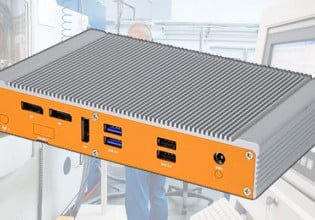New AOV-10 Orbital Sander for Robots Released by ATI Industrial Automation
This week ATI Industrial Automation announced its latest robotic addition, an orbital sander.
What are orbital sanders, and why would using one on a robotic arm be beneficial to an automated process?
The Need for Automated Sanding Techniques
Sanding goes beyond making a surface smooth. It can also improve adhesive surfaces and remove dust, and other debris left behind. While many different sanding techniques exist, some are not easy to automate.
Some sanding techniques include sand-blasting and hand sanding with various grades of sanding medium, but these require works on a line. This sanding technique could be deployed with a robotic arm, but the time taken to sand areas would be far too great.
There are some disadvantages of human-operated sanding stations, including issues with human error and precision. This is where the ATI Orbital Sander comes in.

New AOV-10 orbital sander attached to a FANUC robotic arm. Image used courtesy of ATI Industrial Automation.
ATI Industrial Automation Orbital Sander is Pneumatically Controlled
To overcome these problems, ATI has introduced the AOV-10 orbital sander, which is pneumatically controlled. The attachment is designed to work with the most commonly used robotic and cobot systems and can be oriented in several ways, including upside down.
The orbital sander has built-in compliance. The use of pneumatics to control the sander means that it can easily be controlled with precision by a computer system to produce consistent results in rotation speed.
The use of a robotic controlled orbital sander also means that the same amount of material will be sanded from each workpiece on the production line, thereby making it suitable for precision engineering. By nature, the orbital sander provides an even surface and is therefore unaffected by grain direction such as that found in wood.
Unique Capabilities of Orbital Sander
The sanding capabilities of the AOV-10 are improved with the use of 3M’s adhesive product range and allows for the easy automation of sanding processes. A robotic system also means that workers can be kept away from potentially harmful substances and improve health and safety.
The 6-inch orbital sander uses a Velcro layer allowing it to be used with a wide range of adhesive materials ranging from sandpaper to foam. The use of the Easy Hook and Loop makes mounting the sander simple. The AOV-10 also includes a vacuum option for removing dust, which can help keep their surroundings clean.
The AOV-10 shows how even processes that were once thought to be doable only by humans can also be done by machine. The sander can help with those interested in precision engineering or those who deal with materials that, when sanded, release potentially dangerous substances.
What applications would you use the orbital sander for?






